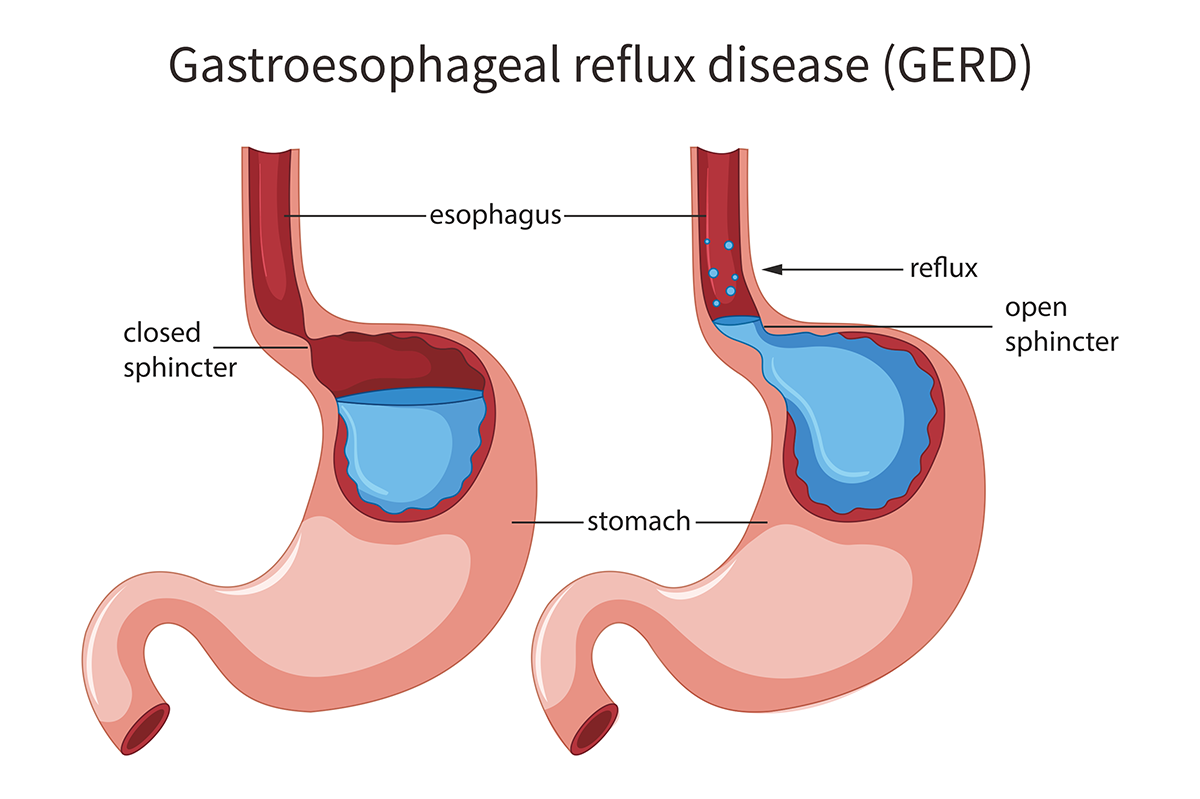Gastroesophageal reflux disease (GERD) is a common condition in which the gastric contents move up into the esophagus. Reflux becomes a disease when it causes frequent or severe symptoms or injury. Reflux may damage the esophagus, pharynx, or respiratory tract.

Options for treating gastroesophageal reflux disease (GERD)
In most cases, lifestyle changes and medications are enough to prevent and relieve symptoms of GERD. However, sometimes other types of treatment are required. The more advanced options are the Transoral Incisionless Fundoplication (TIF) procedure and traditional antireflux surgery.
Traditional, or conventional, antireflux surgery has been considered an effective solution for treating GERD for a long time. The surgery involves several abdominal incisions and typically includes side effects such as difficulty swallowing (26%), bloating (36%), and increased flatulence (65%).
Transoral Incisionless Fundoplication (TIF) is an advanced endoscopy procedure to treat GERD without surgery. The result may be a shorter treatment time, less pain, and faster recovery than with surgery.
The main differences between TIF and traditional antireflux surgery are:
- No Incisions: Conventional antireflux surgery involves accessing the anatomy via 3-5 abdominal incisions. The TIF procedure does not require any incisions as it is performed through the patient’s mouth. This difference leads to less patient discomfort.
- No Dissection: Certain antireflux surgeries require the surgeon to cut around anatomical structures, which can increase the risk of complications and adhesions and can prolong recovery time. The TIF procedure does not require cutting.
- Excellent Safety Profile: To date, more than 27,000 TIF procedures have been performed with fewer complications than conventional antireflux surgery.
How is TIF performed?
Our highly qualified gastroenterologists use a flexible, tube-like imaging instrument called an endoscope to look inside patients’ bodies. For TIF, the doctor feeds the endoscope through a special TIF device. The device allows the doctor to repair or recreate the body's natural barrier to reflux. It uses preloaded tweezers and fasteners and requires no incision.
Benefits of the TIF procedure:
- No scars, due to incisionless approach
- Faster recovery, since there is no internal cutting of the natural anatomy
- Fewer complications and adverse events than with conventional surgery
- Revisable if required
Common, short-term side effects of TIF may include:
- Sore throat
- Shoulder pain
- Minimal chest pain
- Minimal chance of bleeding
For more information about non-surgical treatment for gastroesophageal reflux disease (GERD), please contact the Bumrungrad Digestive Disease Center and schedule an
appointment with our gastroenterologists.
For more information please contact:
Last modify: November 19, 2024